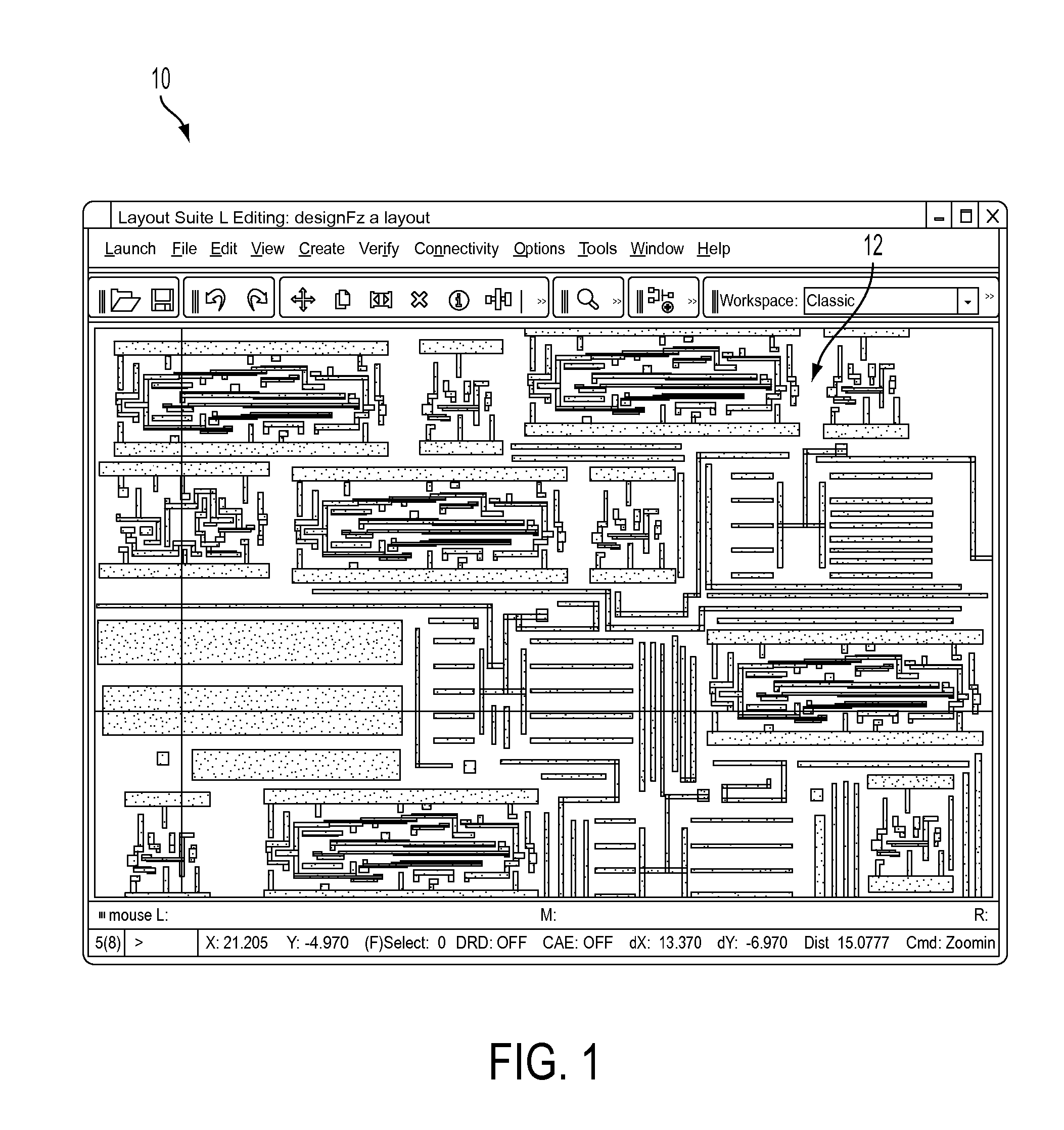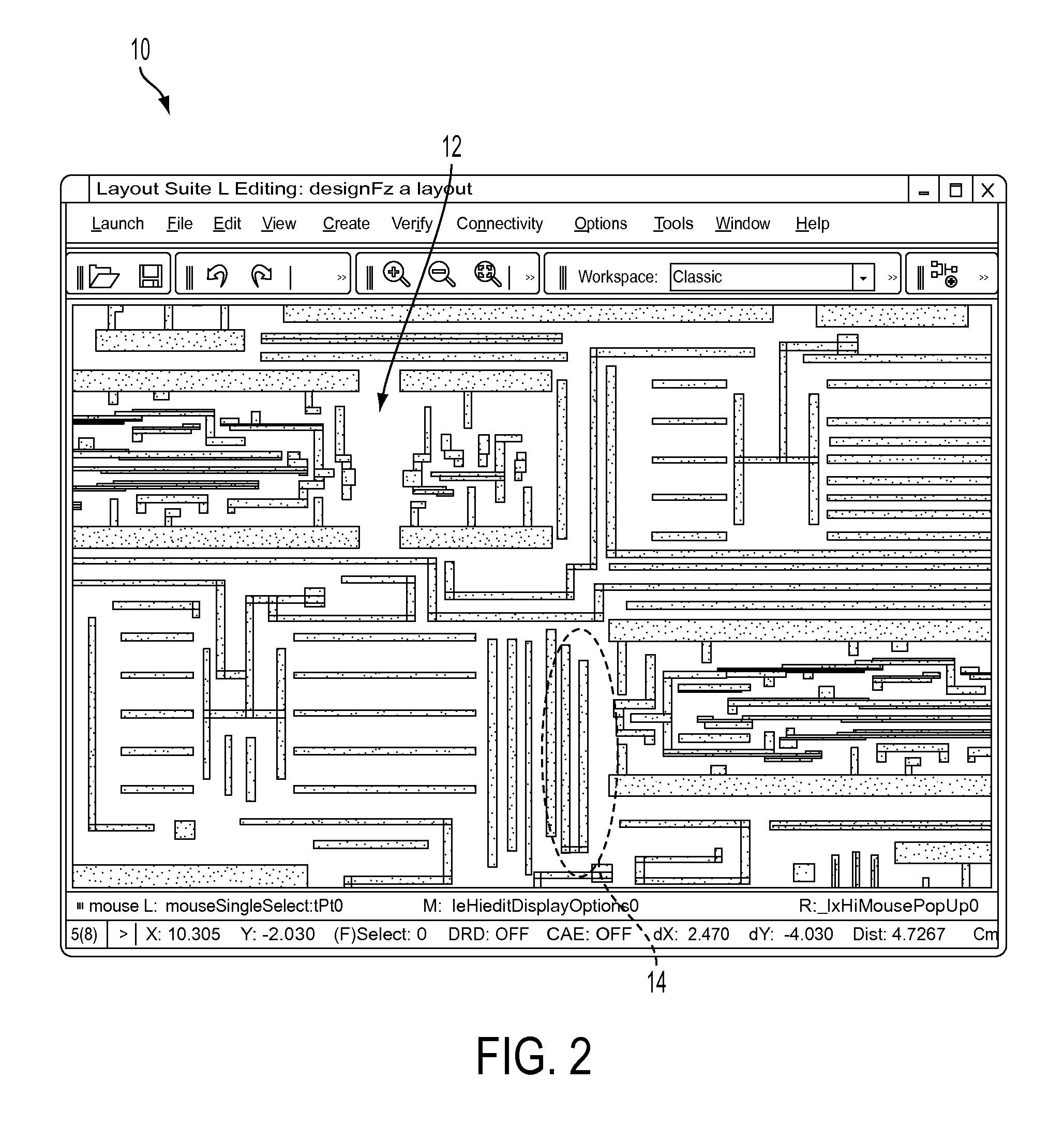Visualization and information display for shapes in displayed graphical images based on user zone of focus
a visualization and information display technology, applied in the field of graphical display by computer systems, can solve the problems of designers losing their place or context, designers often “lost touch” with the layout, and designers may lose context, so as to increase and maintain the user's awareness of the user's context, and improve design efficiency and user satisfaction
- Summary
- Abstract
- Description
- Claims
- Application Information
AI Technical Summary
Benefits of technology
Problems solved by technology
Method used
Image
Examples
Embodiment Construction
[0028]The present inventions relate to graphical display by computer systems, and more particularly to displaying graphical and descriptive information using a computer system. The following description is presented to enable one of ordinary skill in the art to make and use the invention and is provided in the context of a patent application and its requirements. Various modifications to the preferred embodiment and the generic principles and features described herein will be readily apparent to those skilled in the art. Thus, the present invention is not intended to be limited to the embodiment shown but is to be accorded the widest scope consistent with the principles and features described herein.
[0029]The present invention is mainly described in terms of particular methods and systems provided in particular implementations. However, one of ordinary skill in the art will readily recognize that these methods and systems will operate effectively in other implementations. For exampl...
PUM
 Login to View More
Login to View More Abstract
Description
Claims
Application Information
 Login to View More
Login to View More - R&D
- Intellectual Property
- Life Sciences
- Materials
- Tech Scout
- Unparalleled Data Quality
- Higher Quality Content
- 60% Fewer Hallucinations
Browse by: Latest US Patents, China's latest patents, Technical Efficacy Thesaurus, Application Domain, Technology Topic, Popular Technical Reports.
© 2025 PatSnap. All rights reserved.Legal|Privacy policy|Modern Slavery Act Transparency Statement|Sitemap|About US| Contact US: help@patsnap.com



